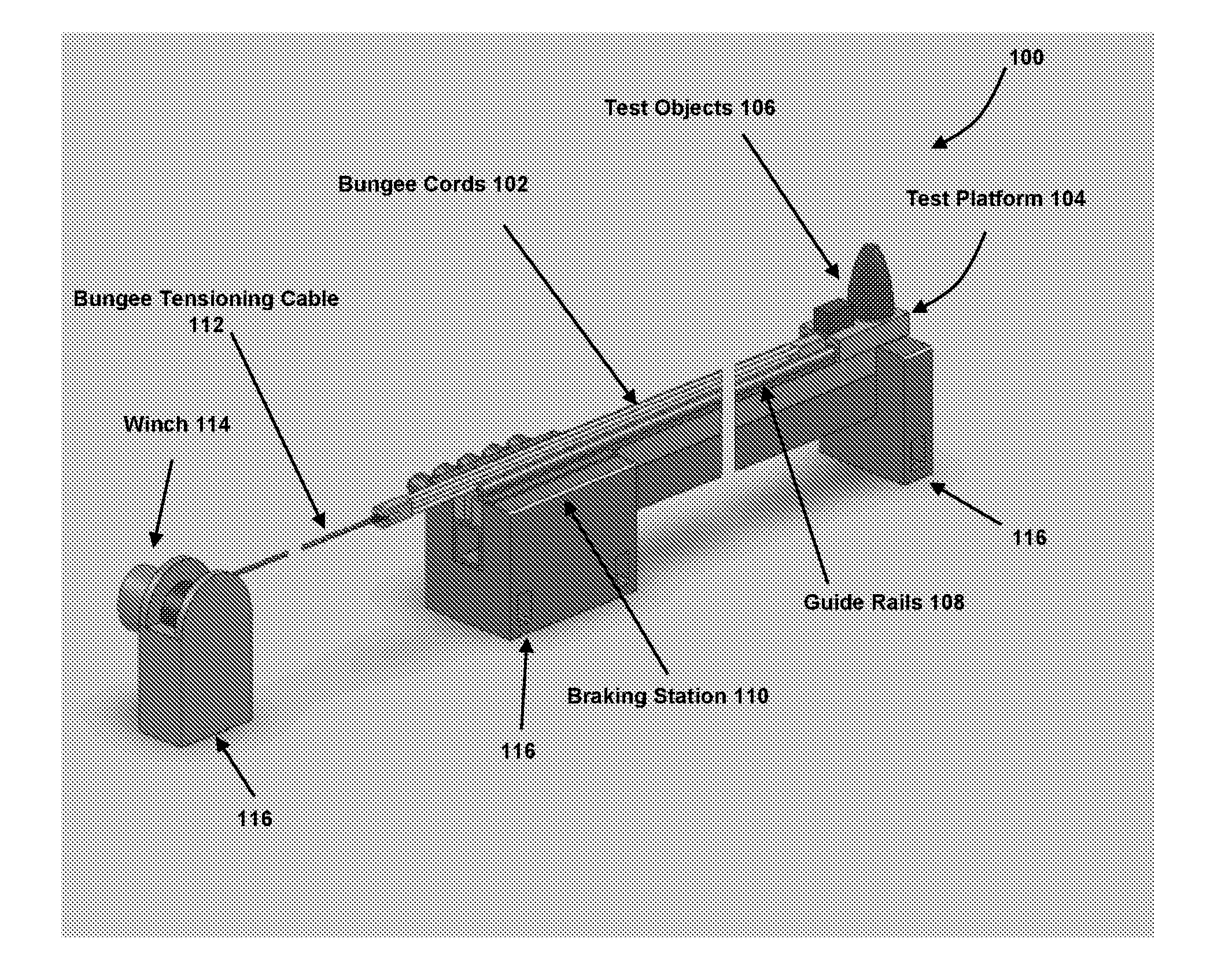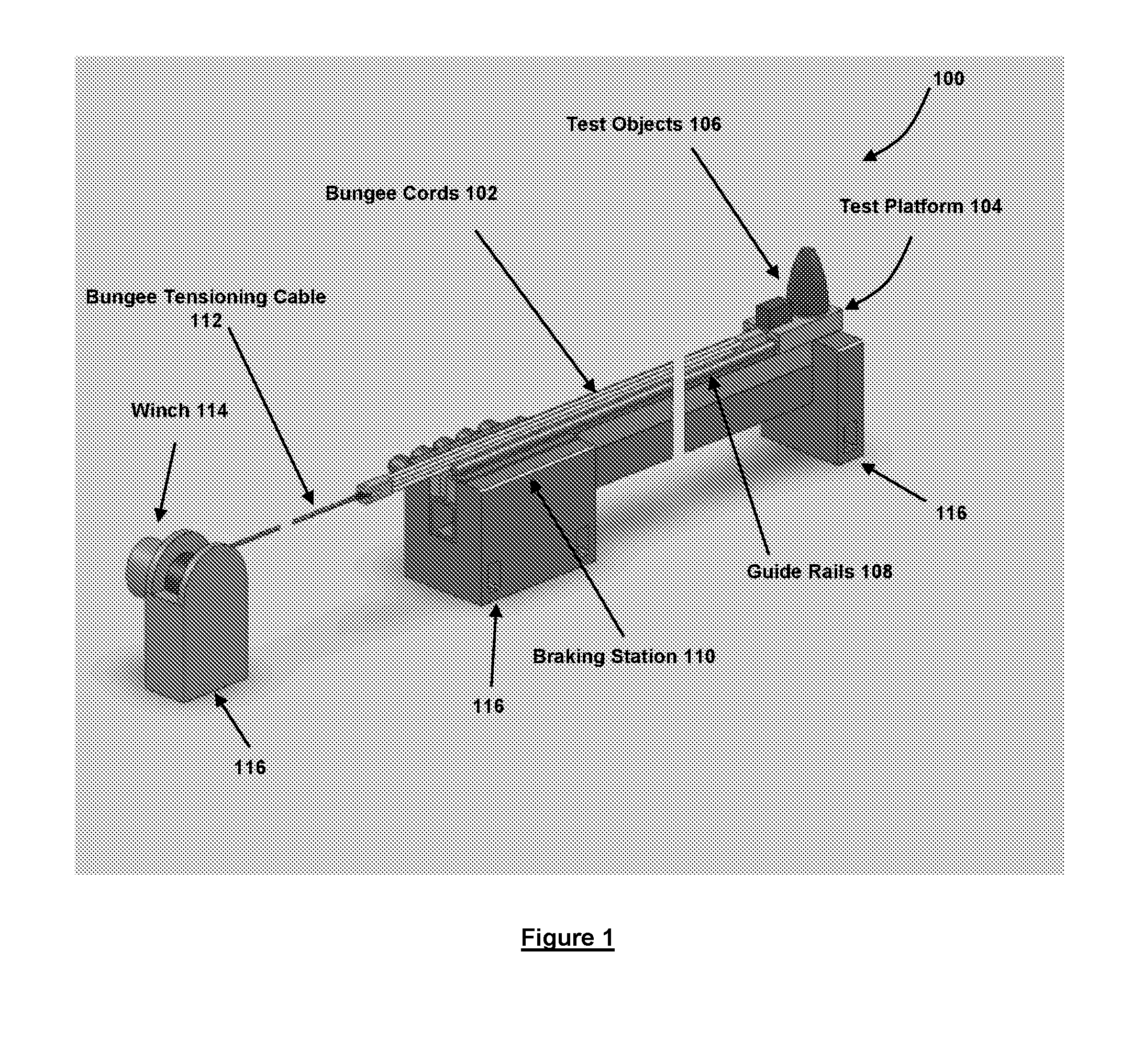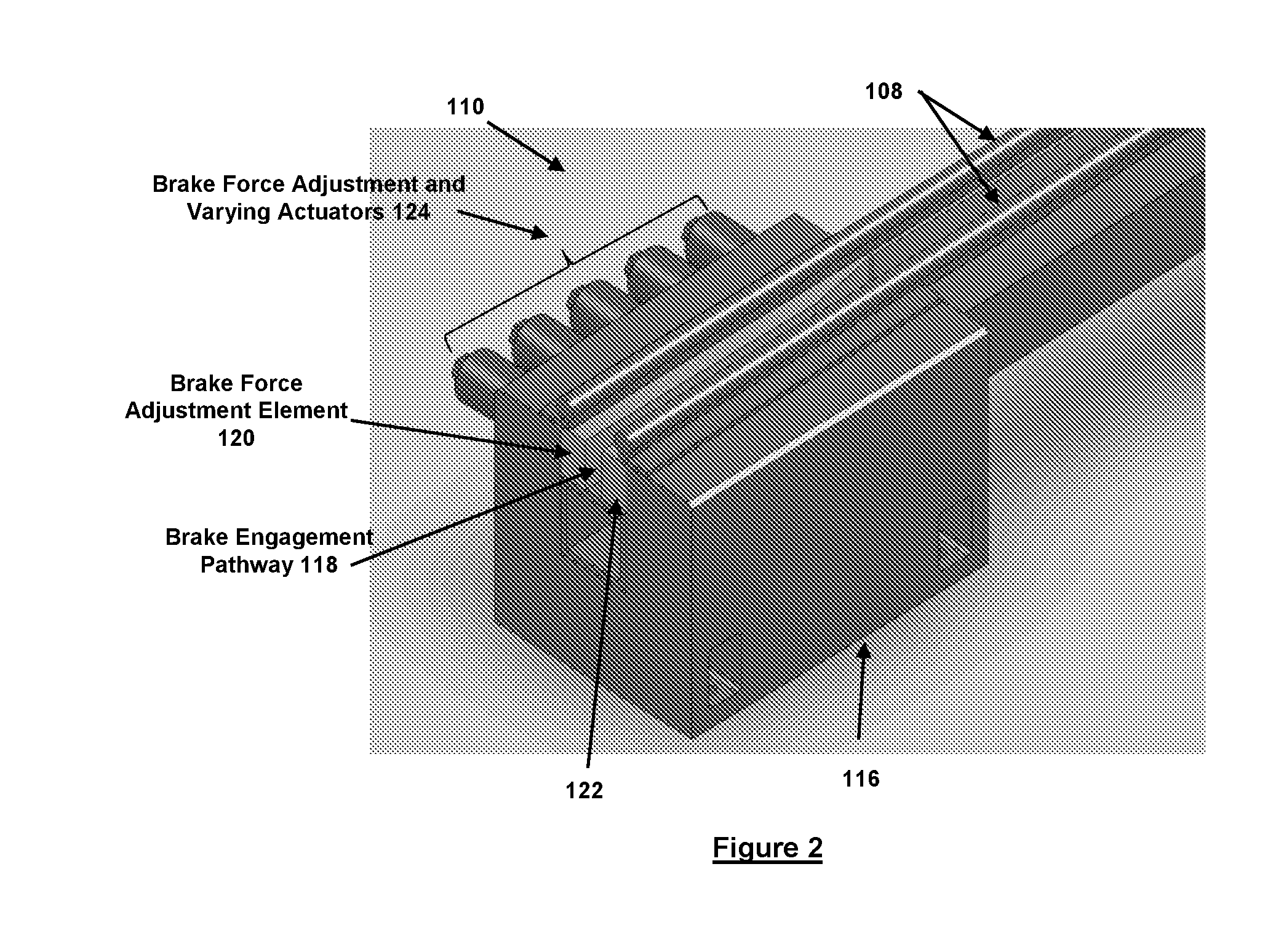High-G Shock Testing Machine
a shock testing machine and high-g technology, applied in the direction of structural/machine measurement, material strength using single impulsive force, instruments, etc., can solve the problem of high cost of both testing methods, increased complexity of axial as well as lateral and bending shock loading combinations, and increased difficulty in adjusting the load
- Summary
- Abstract
- Description
- Claims
- Application Information
AI Technical Summary
Benefits of technology
Problems solved by technology
Method used
Image
Examples
second embodiment
[0048]shock and shock / tail-slap testing machines are for applying short duration and high acceleration / deceleration pulses, such as of over ±10,000 g over durations of e.g., over 5 msec. These shock loading machine concepts can apply one or a combination of shock loading pulses to the article being tested, such as an ordinance, in axial and lateral directions to simulate almost any shock loading events, including tail slap, where large lateral accelerations / decelerations are introduced due to the bending and rebound in the lateral direction. For purposes of this disclosure, “tail-slap” means a shock loading event in a direction perpendicular to its intended motion, such intended motion being in a direction of penetration with regard to an ordinance. For other articles being testing, the term shock loading event is merely in a direction created by the machine with regard to an orientation of the article being tested in the machine.
[0049]The first embodiment of shock and shock / tail-sl...
first embodiment
[0050]The shock testing machine of the first embodiment is shown in FIG. 1, generally referred to by reference numeral 100. In FIG. 1, the breaks on the left and right of the machine are used to denote a long length of the components being broken. In this design, the machine 100 is laid down horizontally to allow the use of longer test platform travel and the use of longer length bungee cords 102 to provide large accelerating forces to the test platform 104 over the entire range of its travel. The test objects 106 are mounted over the test platform 104 using mounting means specific to the type of object and the testing required. The test platform 104 is accelerated on one or more guide rails 108 towards a braking station 110 having braking elements (described below) by locking the test platform 104 from movement, tensioning the bungee cords 102 with the bungee tensioning cable 112 and winch 114 and then releasing the test platform 102 to allow the tension in the bungee cord(s) 102 t...
PUM
| Property | Measurement | Unit |
|---|---|---|
| diameter | aaaaa | aaaaa |
| mass M1 | aaaaa | aaaaa |
| mass levels | aaaaa | aaaaa |
Abstract
Description
Claims
Application Information
 Login to View More
Login to View More - R&D
- Intellectual Property
- Life Sciences
- Materials
- Tech Scout
- Unparalleled Data Quality
- Higher Quality Content
- 60% Fewer Hallucinations
Browse by: Latest US Patents, China's latest patents, Technical Efficacy Thesaurus, Application Domain, Technology Topic, Popular Technical Reports.
© 2025 PatSnap. All rights reserved.Legal|Privacy policy|Modern Slavery Act Transparency Statement|Sitemap|About US| Contact US: help@patsnap.com



